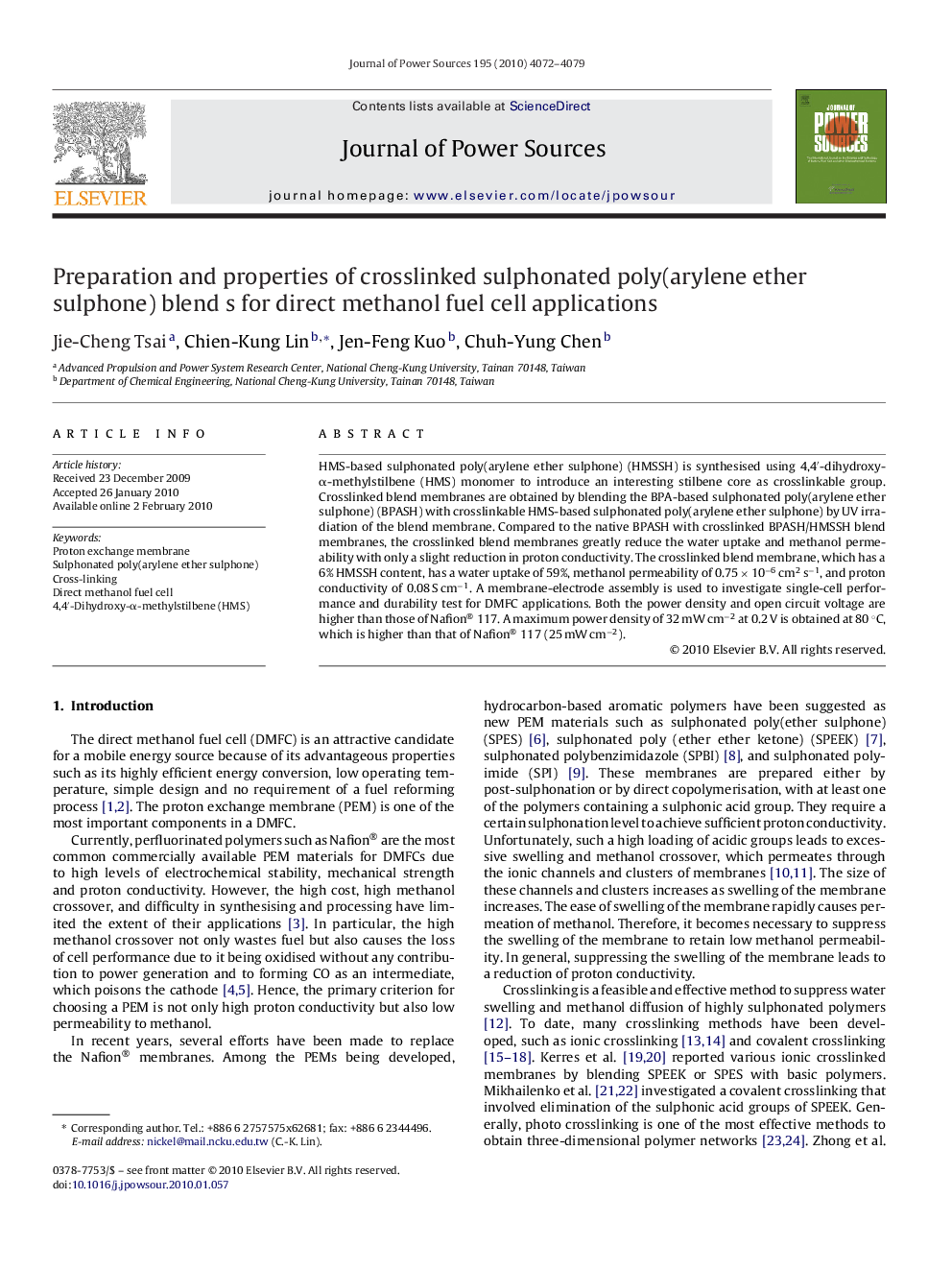| Article ID | Journal | Published Year | Pages | File Type |
|---|---|---|---|---|
| 1290331 | Journal of Power Sources | 2010 | 8 Pages |
HMS-based sulphonated poly(arylene ether sulphone) (HMSSH) is synthesised using 4,4′-dihydroxy-α-methylstilbene (HMS) monomer to introduce an interesting stilbene core as crosslinkable group. Crosslinked blend membranes are obtained by blending the BPA-based sulphonated poly(arylene ether sulphone) (BPASH) with crosslinkable HMS-based sulphonated poly(arylene ether sulphone) by UV irradiation of the blend membrane. Compared to the native BPASH with crosslinked BPASH/HMSSH blend membranes, the crosslinked blend membranes greatly reduce the water uptake and methanol permeability with only a slight reduction in proton conductivity. The crosslinked blend membrane, which has a 6% HMSSH content, has a water uptake of 59%, methanol permeability of 0.75 × 10−6 cm2 s−1, and proton conductivity of 0.08 S cm−1. A membrane-electrode assembly is used to investigate single-cell performance and durability test for DMFC applications. Both the power density and open circuit voltage are higher than those of Nafion® 117. A maximum power density of 32 mW cm−2 at 0.2 V is obtained at 80 °C, which is higher than that of Nafion® 117 (25 mW cm−2).
